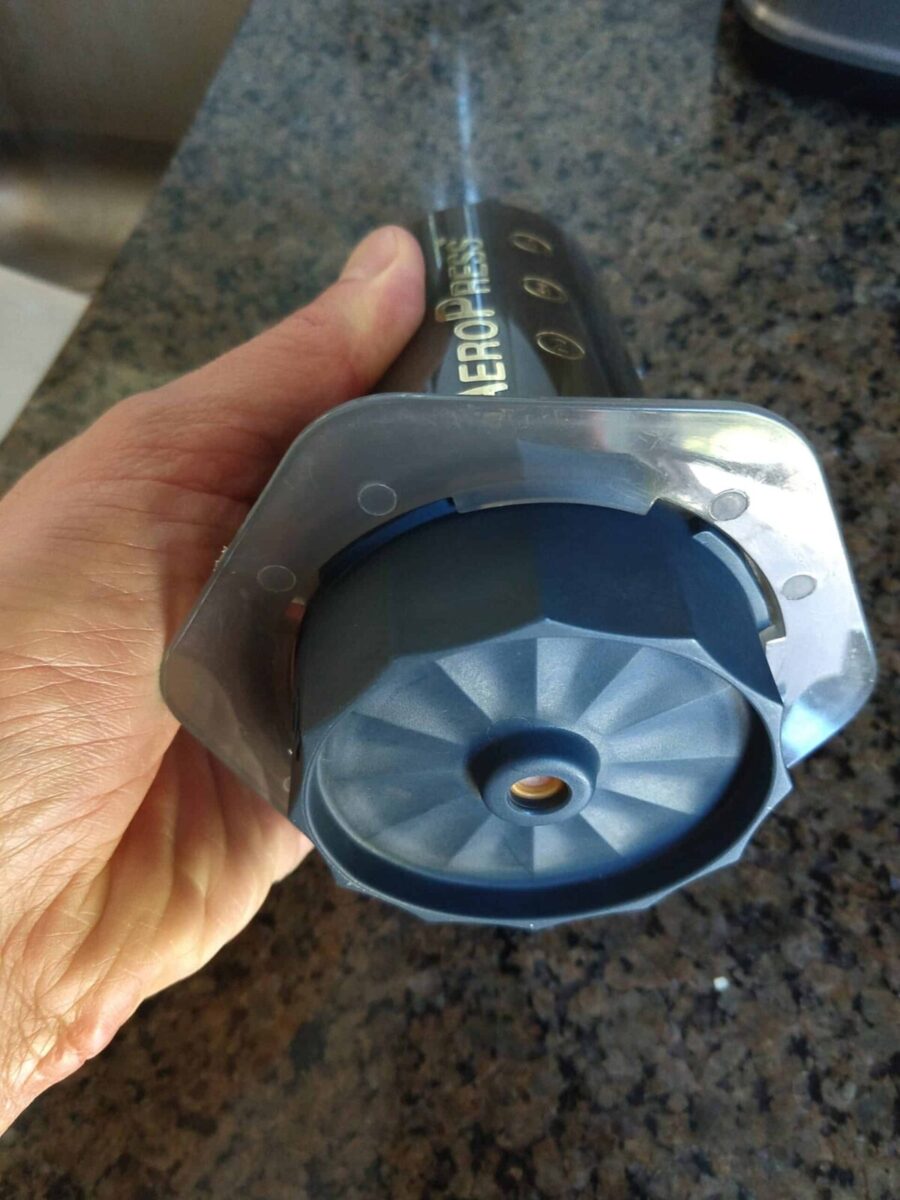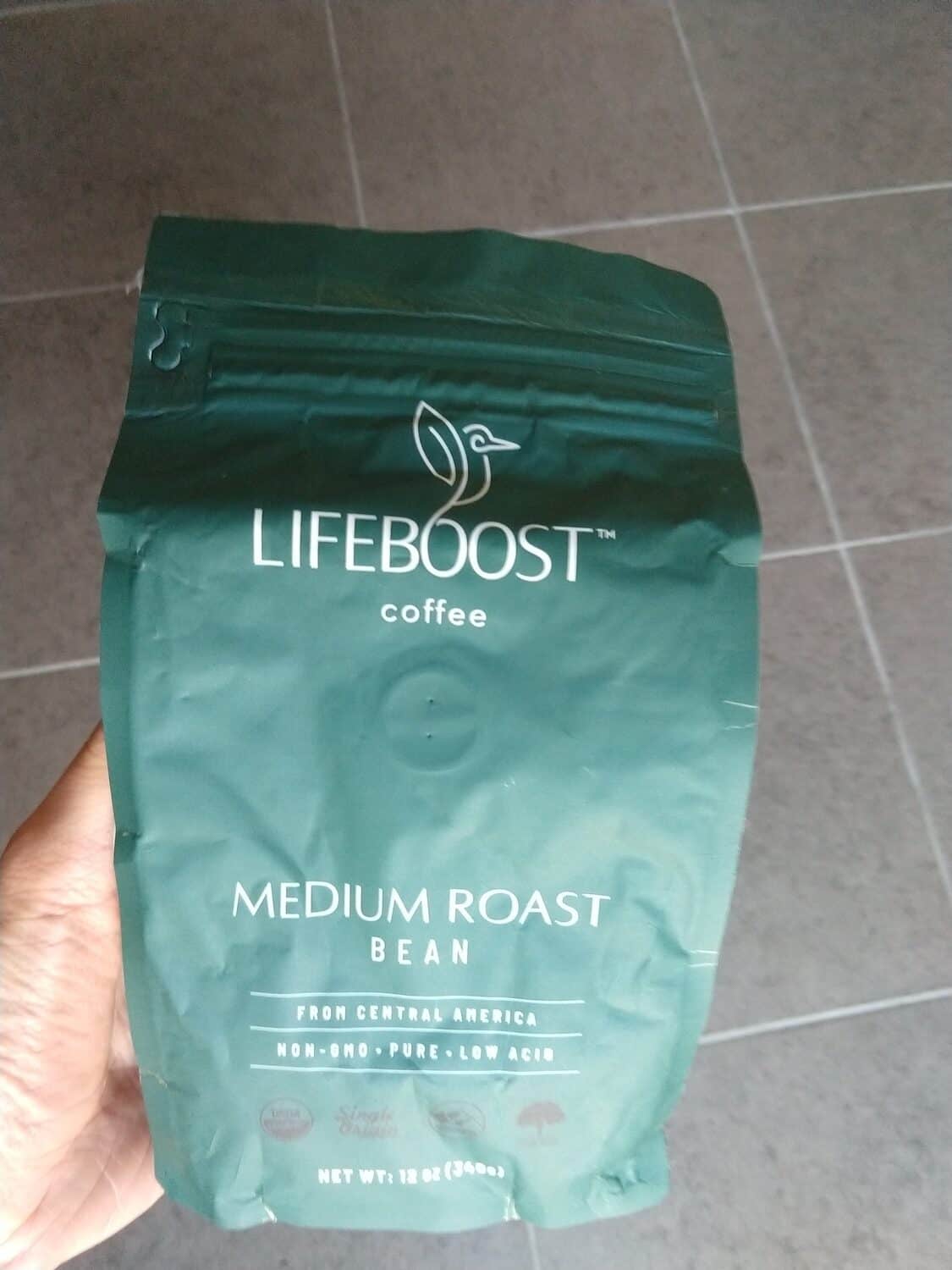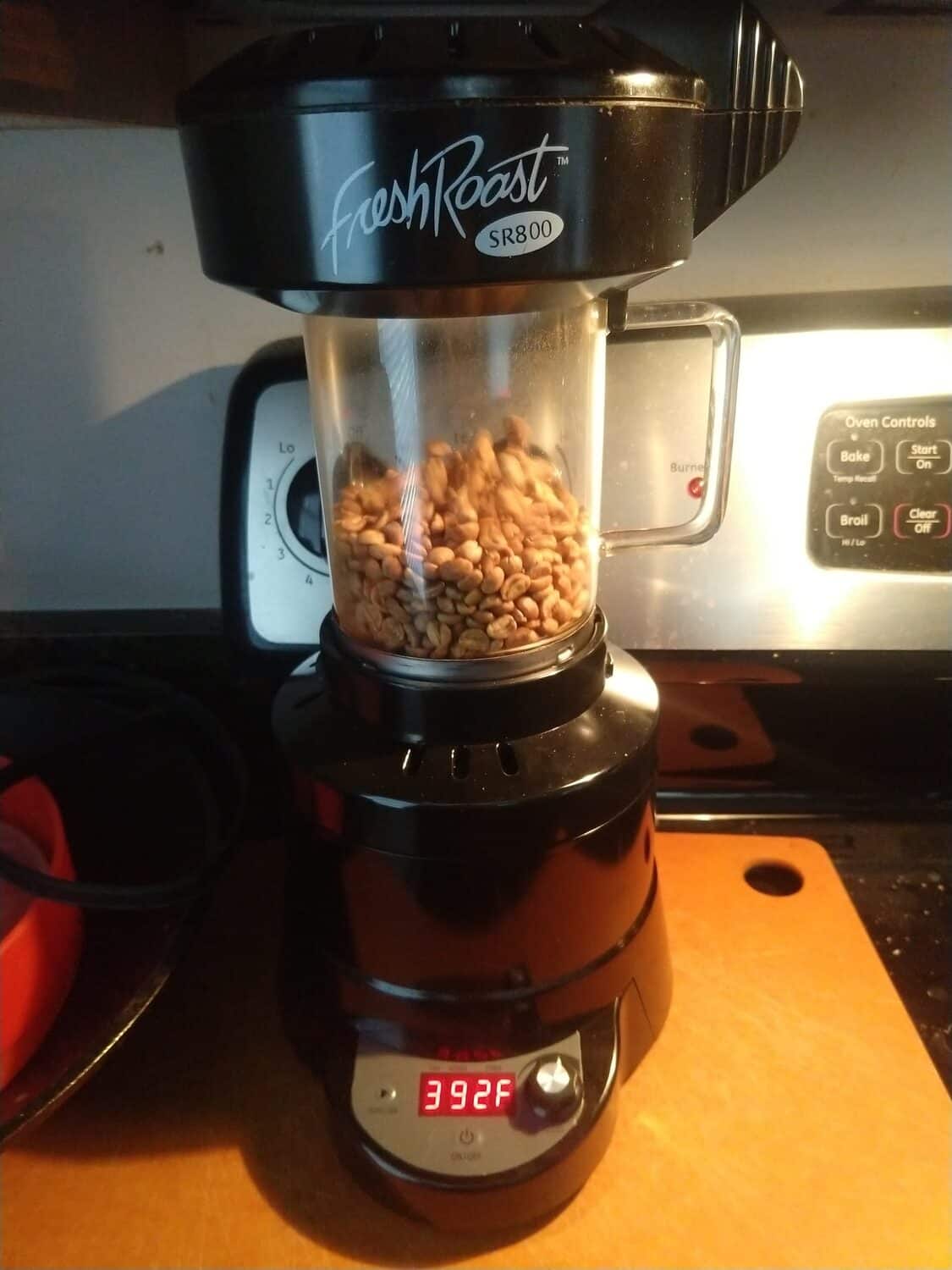Timemore Chestnut Grinder Review: The Best Hand Grinder For Your Money?
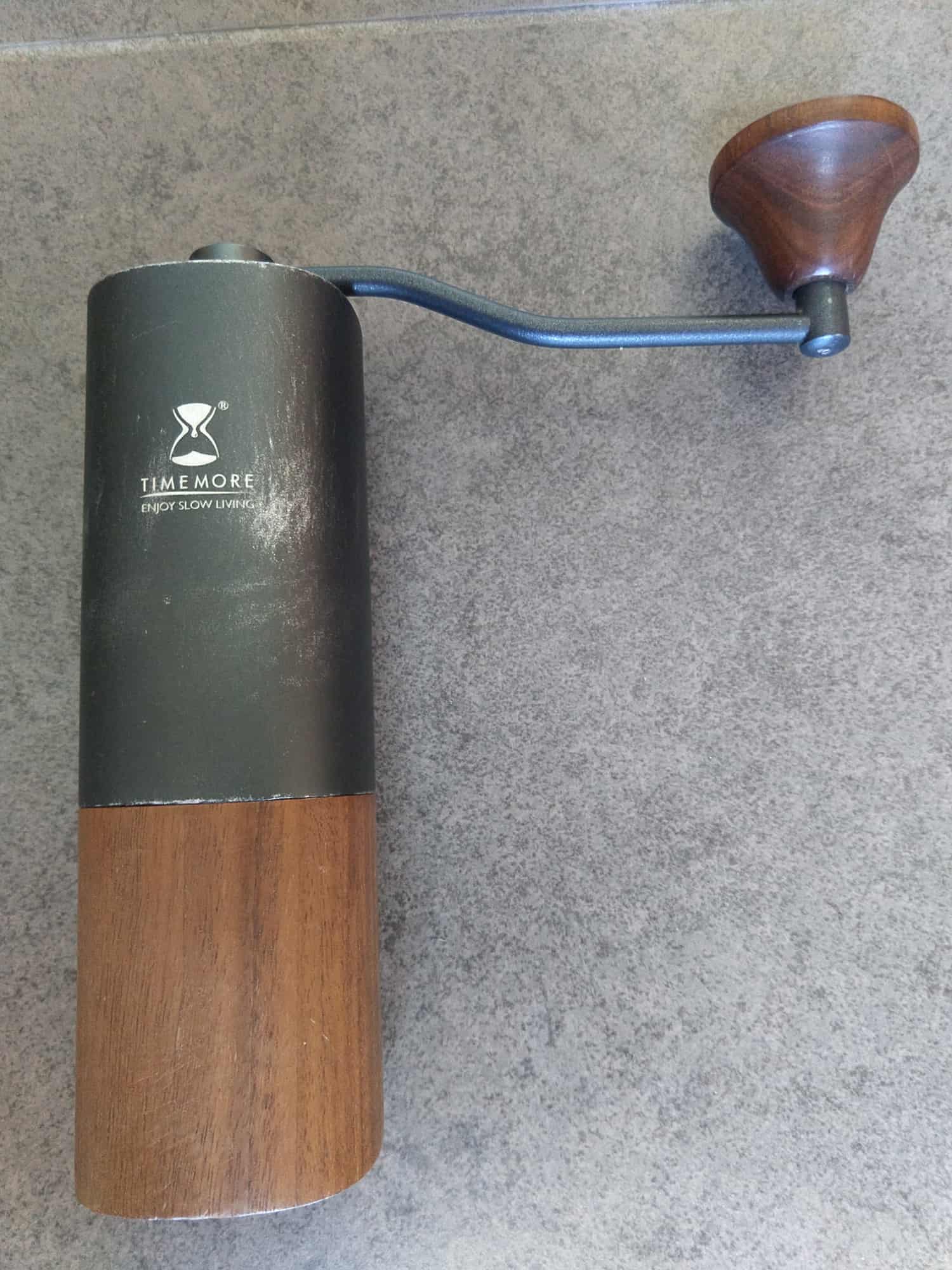
If you have a good manual coffee grinder, you'll never have trouble making a decent cup.
As long as the beans are fresh, you can at least grab an AeroPress and brew something great just about any time, any place.
It sure beats being stuck with lukewarm, watery hotel coffee or with one of the coffee mega-chains. Nobody likes that.
There have been plenty of good, affordable electric grinders for years. But they're obviously not portable. And even if travel isn't an issue, the noise can be...intense. In some living situations, that's a major problem.
And manual grinders are nothing new, either. However, the readily available ones have usually had ceramic burrs, loose adjustment, and imprecise construction. Those things lead to uneven grinding, which causes uneven extraction and therefore not-so-good coffee.
The high-end hand grinder market has been around for some time, but was quite obscure until a few years ago.
Suddenly, the North American market saw a wave of premium manual grinders that promised grind quality like the good electric ones, but in a quiet and portable package.
Timemore caught my attention as one of the more affordable models. Early reviews were few, but positive, so I took the plunge on their original Chestnut model. (It's now called the Chestnut G1, but I believe it was the only "Chestnut" model at the time.)
That's where we're looking at today.
Below are my impressions after nearly two years of daily use.
The Timemore Chestnut is an excellent value that holds its own with much more expensive hand grinders. Grind quality is outstanding, and portability is very good. However, it has a few frustrating design quirks, and it's not the right choice if you mostly brew espresso.
Table of Contents
I'm an affiliate.
I hope my product recommendations make your life a little better! As a member of programs including Amazon Associates, I earn from qualifying purchases. If you do choose to purchase though links here, then I greatly appreciate your support!
What The Timemore Chestnut Grinder Does Best
Impressively even grind
You probably know--if only because I write about it incessantly--that good grind quality is critical for good coffee.
If that's news, then the background is that poor grinders leave a combination of powdery bits and chip-like pieces all together. Those extract way too quickly or too slowly during brewing, so it adds some amount of dullness (from under-extraction) and bitterness (from over-extraction) to every single cup. A good grinder minimizes this and therefore lets your coffee taste its best.
Anyway, this is the top criterion for any grinder, and the Timemore Chestnut delivers. I haven't tested their other models, but the Slim, Nano, or any others with the same burrs should perform every bit as well.
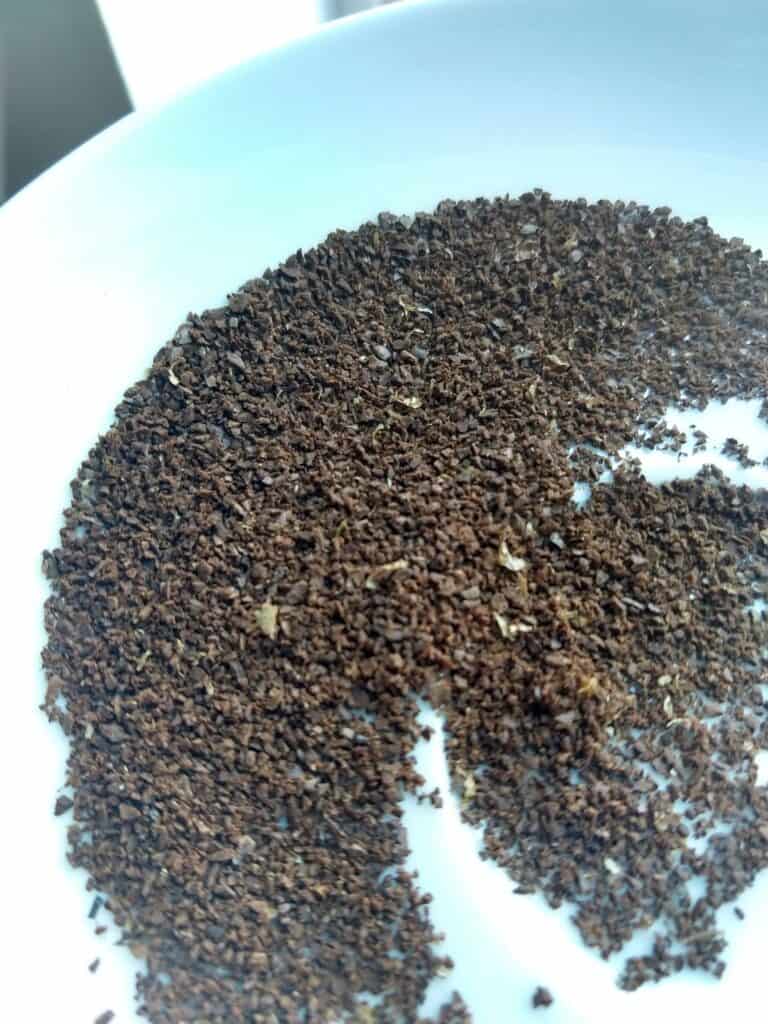
The burrs are stainless steel, and 38mm in diameter. That's large enough to grind quickly but just small enough to keep the body compact. They work quickly and have stayed extremely sharp after 1,000+ uses.
For a medium grind, about 20 clicks from all the way in, you'll get through 15 grams of coffee in around 30-45 seconds. Certainly slower than my previous Baratza Encore, but more than adequate. It's also much quicker than my old Hario Slim, which was a pleasant surprise.
High-quality materials throughout
The body is fully metal, including the internal construction that holds the bearings, shaft, and burrs.
That's important because any play in the internals will create unevenness. In severe cases it can even change the grinder setting as you use it.
The knob and the outside of the catch (the lower attachment that grounds fall in) are both made of wood.
It's quite pretty, especially up close, or at least it was. The wood picks up dings rather easily, which is inevitable during travel or in a cluttered kitchen. I don't mind, since I suppose they give it character, but keep in mind that it won't look as pristine after a few months.
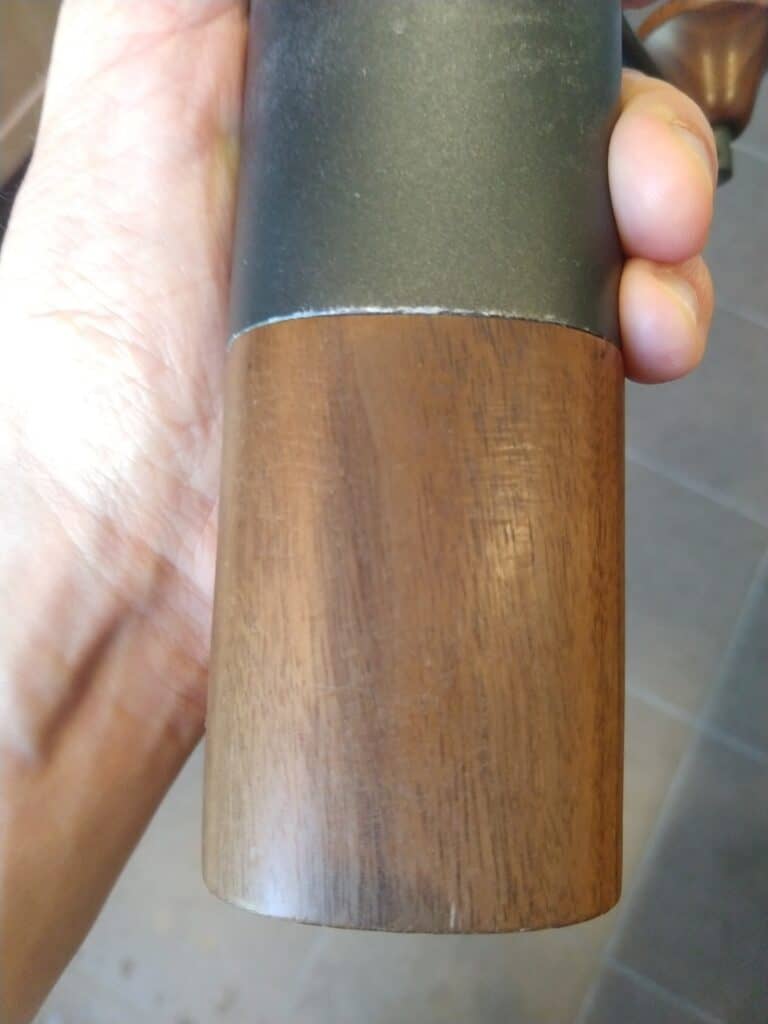
By the way, a lower-priced Chestnut C2 is available. It uses plastic in a few places that save weight and money versus full metal and wood. I've read that these parts are sturdy and do not affect grind performance, but I couldn't tell you firsthand.
Very good portability
The dimensions and reasonable weight mean you'll have no trouble traveling with the Timemore.
For instance, I once took a three-week trip with a single, 25-liter backpack. (It was this one from Amazon, if you're curious).
It was obviously snug, but I managed to fit my Timemore grinder and a collapsible pour over dripper in there.
However, portability involves a little more than form factor. You also want it to survive the trip, right?
That's where the metal-and-wood design more than pays for itself. I'm pleased to say that after many trips, and a generally cluttered kitchen, mine has seen no structural damage or misalignment or any other cause for concern.
Of course, there's a limit to what any kitchen implement can take. And we're not dealing with a cast iron skillet here.
But with even modest care, I'm confident the Chestnut G1 will stand up to your travels.
Sets the standard for value
Really good burrs come from a specific and costly manufacturing process.
They aren't quickly cast like ceramic ones or sintered (molded) steel. There aren't even very many factories that produce them.
But they're the only way to get the sharpness and precision that great coffee requires. And, of course, these burrs need to be mounted inside a solid structure with good bearings that will last through millions of rotations.
Only a couple brands Besides Timemore make grinders of equal quality in a similar price range. Knock and 1Zpresso come to mind.
Those are both excellent, by all accounts, and even have some small design features that I wish Timemore had used.
But at the end of the day, they cost more. Usually a few bucks more than the Chestnut G1/Slim/Nano, but roughly twice the price of the equally capable Chestnut C2.
Before so many premium manual grinders were available, a brand called Porlex was the go-to choice in this price range. It is better than budget Hairo offerings, but not impressive. Timemore has both outdone its performance and (with the C2) undercut its price at the same time.
That's quite a feat.
Strictly in terms of grind quality, Timemore leaves virtually nothing to improve upon. I wouldn't recommend (and haven't cared to try) anything more expensive unless something about its look or feel really appeals to you.
Some Drawbacks (But I Can Live With Them)
It's obvious I'm a fan of the Timemore grinder. The fact that I haven't replaced it with a shiny new alternative says a lot.
But it isn't quite perfect. If or when the time for a replacement comes, I'll look for a couple of things that would make using and carrying it just a bit better.
Read on for those details, as well as a couple general limitations. They may not be problems, but that depends on exactly how you plan to use it.
Not very ergonomic
The catch snaps on to the grinder's main chamber. That's a good design because it's easy to remove and precise to reattach.
But it also means you must hold only the main chamber while grinding. Otherwise, the twisting may pull them apart. (It wouldn't damage anything, but could make a little mess.)
For me, with a men's L-XL glove size, it's barely possible to hold the chamber alone. Here's a picture of what I mean.
Compared to other grinders where the catch screws in, this is a little finicky. And when the metal gets slightly slipper from water or perspiration, it's tough to hold steadily.
Seeing as my hands are slightly larger than average, the average customer probably won't have an issue here.
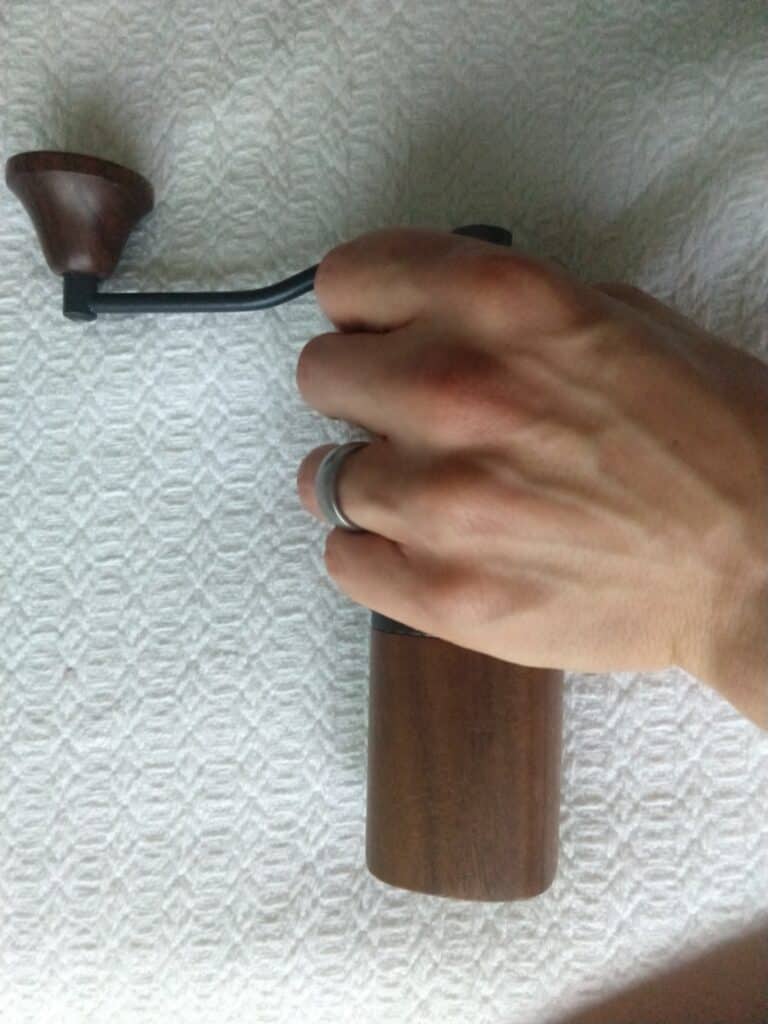
The new Chestnut C2 uses a screw-on catch and has a knurled finish top-to-bottom, so that's probably the more ergonomic choice. Same goes for their smaller (but similar) Slim and Nano models.
Doesn't fit inside an AeroPress
Speaking of the Timemore Slim and Nano models, those are what you should get if you want to keep your grinder inside an AeroPress's plunger.
(That might sound gimmicky, but it's a terrific space-saver for the many of us who travel with an AeroPress.)
The Chestnut models are compact, but not enough to pull this off.
Just note that you'll have to keep track of the handle, which will not fit inside the AeroPress alongside the plunger.
Grind settings are hard to keep track of
Grind adjustment is easy and precise. It snaps into place with a satisfying click, and stays there perfectly. However, it's not easy to tell which setting you're actually in.
There are no numbers on the adjuster, just 12 marks.
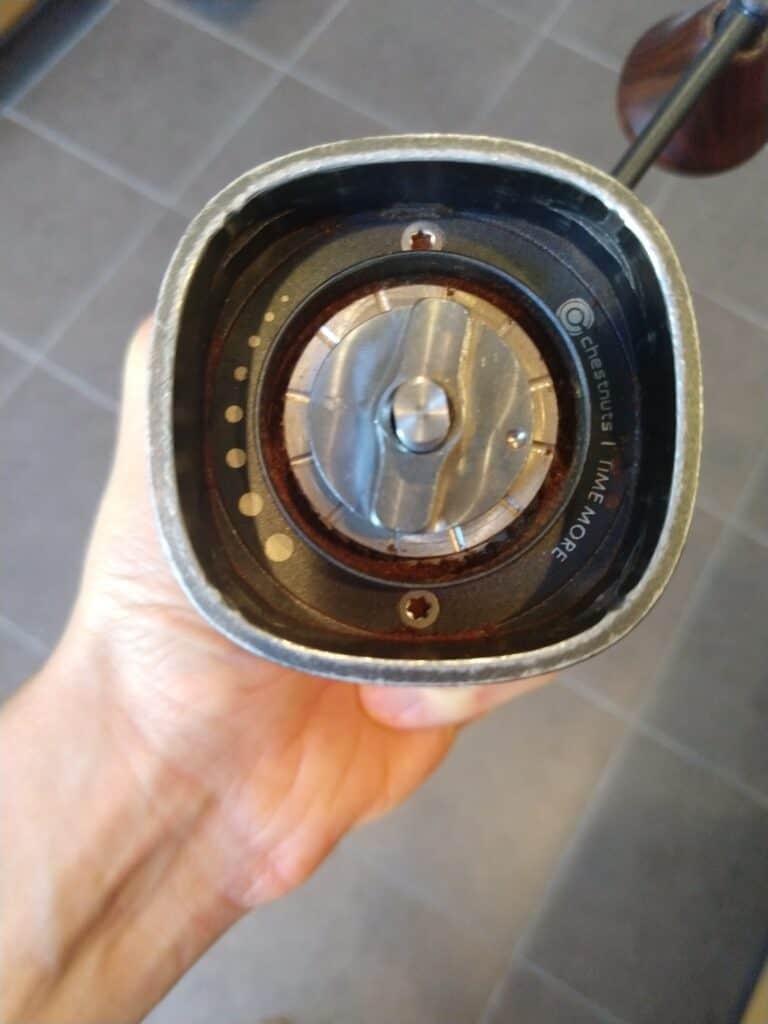
I get the most even grinds between about 12 to 30 clicks from fully in. That means the useful range starts at one full turn and extends another turn and a half from there. The "sweet spot" is probably in the 15-25 range, but it depends on the beans.
You'll change grind settings frequently if you brew with more than one method or more than one coffee.
Unless you wanted to mark the grinder, there's no way to tell which setting you're in. Even that only helps if you're adjusting less than 12 clicks/one full turn.
When in doubt, I just tighten it fully and count back out. It's a nuisance, but a very trivial one.
Not ideal for espresso
Speaking of grind settings, you'll want to look elsewhere if espresso is your go-to.
Timemore does offer a titanium burr upgrade that's supposedly more consistent for super-fine grinding, roughly in the espresso through moka pot range.
I have no doubt that it works beautifully.
But the problem is grind adjustment. Like most premium hand grinders, Timemore uses "stepped" adjustment, meaning it clicks into place as mentioned above.
That's quick and easy. And for medium to coarse precise, the steps are narrow enough to dial in. Great precision would be irritating, not helpful.
But with espresso, the tiniest tweak to grind size makes a huge difference in extraction and flavor.
That's why grinders optimized for espresso tend to use a "stepless" design. That way, it doesn't click into place at specific intervals. Instead, you screw the adjuster in/out just a hair at a time until it's perfect.
Stepped adjustment isn't a flaw of Timemore products. It's actually great--perhaps even better--for everything except espresso (or Turkish). Just keep your intended use in mind.
A bit slow for large batches
Finally, the 38mm burr is plenty fast for one to two servings.
Unless you're making many in a row, as in a coffee shop setting, you'll be fine.
But if you need to grind more than 25-30 grams of coffee at once, you'll encounter two things.
First, the chamber just doesn't hold any more, so you'll have to refill it as you go. Not a terrible thing, but the interruption (and zeroing out your scale each time) could get old if you normally do batch brews in an automatic coffee machine.
Second, while it grinds quickly for its size, it's not that fast.
Chamber volume aside, you'll simply want a larger burr diameter if you regularly grind more than an ounce or two per batch.
(Kinu is a great choice for somewhat larger volume. They're available from Prima Coffee in the US, but will add about $100-$200 over a Timemore.)
Bottom Line: Excellent Quality & Value For Most People
The Timemore Chestnut is an excellent grinder by any standard. At the price, it's just about unbeatable.
Granted, it doesn't have the extra-large burrs or totally handmade artisanal aesthetic of more expensive ones. But that's exactly why the price is so reasonable.
So, if you want a portable and reliable hand grinder, and you don't brew much espresso or Turkish coffee, then the whole Timemore range gets my recommendation.
Which model?
- The Chestnut G1 is the classiest-looking, in my humble opinion
- The Chestnut C2 is the most affordable
- The Slim and Nano are even more travel-friendly
And all will help you enjoy excellent coffee whenever and wherever you like.
Note: I had to wait ages for mine to arrive from China, but you're in luck. All four models are available from North America with quick shipping, at least for now. Get yours here while they're still in stock.

